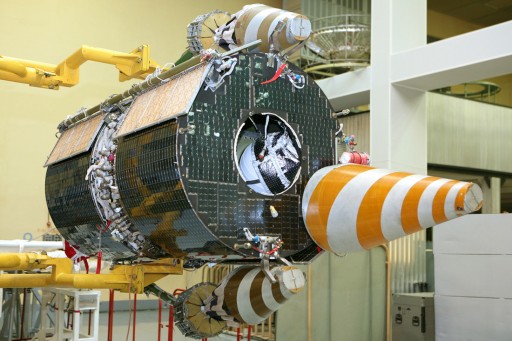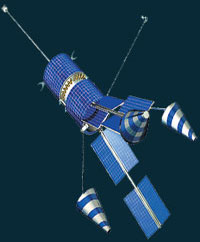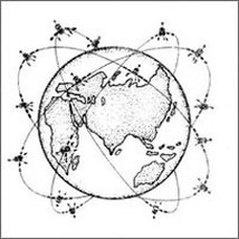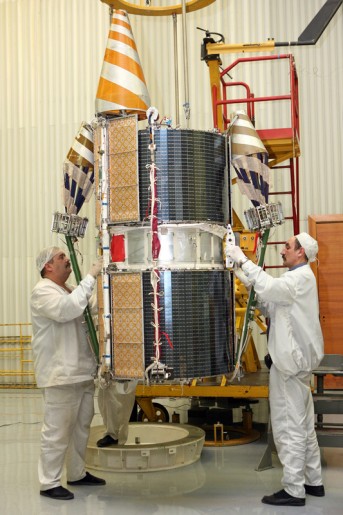Gonets-M

The Gonets Fleet of low-orbiting communication satellite is operated by the Gonets SatCom telecommunications company that provides communication services to a number of users and applications. The second generation Gonets-M satellites are used by industries and governments for different purposes including asset management, tracking of moving and fixed objects, environmental monitoring, meteorology and remote control of electric grids, oil-wells and pipe-lines. Also, the Gonets Satellite fleet can be used to provide communications to remote, disaster-stricken or isolated locations. The satellite constellation features a conventional store-and-forward architecture – the satellites receive small data packets from remote transmitters and downlink the data to the appropriate ground station when the satellite is passing overhead.
The Gonets satellite constellation is understood to be the civilian version of the Strela military communications satellite fleet.

The first two Gonets demonstration satellites were orbited in 1992 with the first three operational vehicles entering service in 1996. The initial Gonets constellation was to consist of six spacecraft in two orbital planes. Three more trios of Gonets satellites were launched by the Tsiklon-3 rocket in 1997, 2000 and 2001, but the three satellites in the 2000 launch were lost in a failure. Each of the original Gonets satellites had a simultaneous Earth-Space communications channel with transmission rates of 2.4kbit/s. The spacecraft had an onboard memory of 12Mbits. Although the constellation never reached the expected number of 12 satellites operating simultaneously, the services of the partial Gonets constellation proved popular.
The next Generation of Gonets spacecraft was inaugurated in 2005 when the first Gonets-M satellite was launched along with its first Rodnik-S #1 companion satellite, the military equivalent of Gonets-M.

Over the coming years, a number of triplet launches aboard the Rockot launcher followed as progress was made to establish a fully operational Gonets-M constellation along with a Strela/Rodnik military communication satellite fleet. One more Gonets-M satellite was part of a Rockot launch in 2010 and two triplets of spacecraft were delivered to orbit in 2012 and 2013 with another two trios to follow in 2014.
The Gonets spacecraft are orbiting Earth in a circular orbit of 1,500 Kilometers at a high inclination of 82.5 degrees. The constellation features four orbital planes with three spacecraft each, featuring a 45-degree longitudinal spacing. Gonets and Strela Satellites are built by NPO Prikladnoi Mekhaniki, now ISS Reshetnev.
Each Gonets-M (=Messenger) spacecraft weighs 280 Kilograms featuring fixed body- and boom- mounted solar panels that provide power to the vehicle that is stored in Nickel/Hydrogen Batteries to support a peak power consumption of 200 Watts. The satellites use a deployable boom for gravity gradient stabilization which provides sufficient Earth-pointing accuracy of the communication antennas. The satellites use a pressurized equipment compartment that houses the various avionics and subsystems.

The Gonets-M satellite provides a total of 16 communication channels – 14 (13+1) uplink channels and two downlink channels with no space-to-space capability. Communications are supported in frequency ranges of 260MHz and 312-390MHz – typically, uplink is provided at data rates of 2.4 to 9.6Kb/sec while downlink is provided at data rates of 4.8 to 6.4Kb/sec. Data can be stored in an 8MB onboard memory.
For beam accuracy, Gonets-M uses the Russian GLONASS positioning satellite system with a user position accuracy of 100 meters to allow it to target the desired ground stations for data downlink. The daily data throughput for each spacecraft is expected to be at least 270Mbit with a typical message length of up to 500Kbits and a nominal transfer time of under two minutes per message. The satellites have a life expectancy of five years.
The next generation of Gonets satellites known as Gonets-M1 will be introduced in the coming years utilizing a completely new and more powerful spacecraft bus with an unpressurized bus section and deployable solar arrays. Each M1 satellite is expected to weigh 250 Kilograms and increase the capacity of the Gonets constellation to over twenty times that of the of current Gonets-M fleet. Each M1 satellite is expected to operate at least ten years and 16 spacecraft are booked for launches beginning in the next two years.
